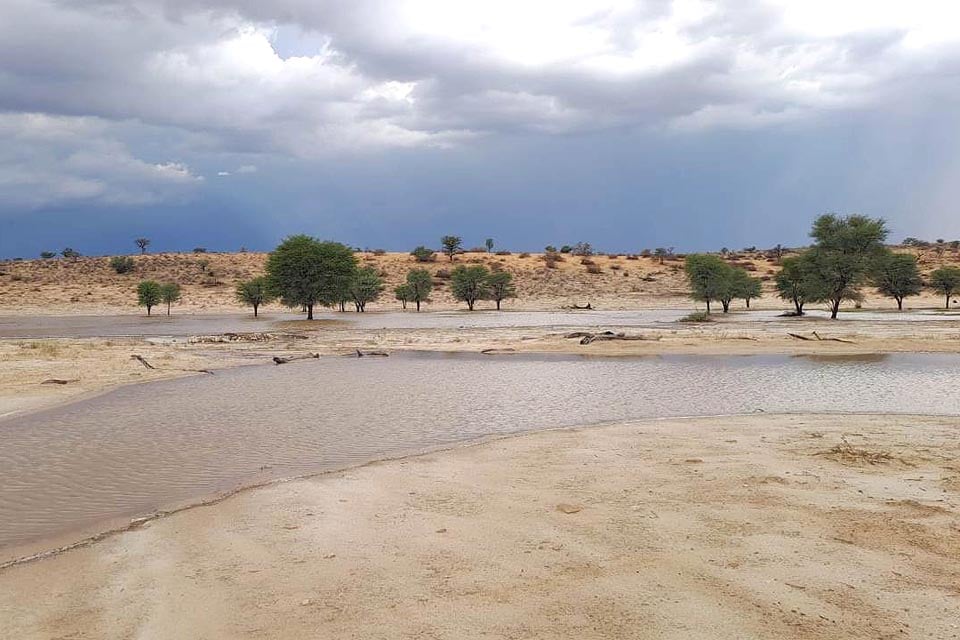After suffering from a devastating drought that lasted more than a decade, the drought in large parts of Kaokoland has finally been broken.
While this is a welcome relief to the inhabitants of Kaokoland, it also present challenges to travellers heading along the C43 between Opuwo and the Epupa Falls – an area that has received heavy rains recently. At least one vehicle was swept off the causeway about 50 km north of Opuwo recently – fortunately without any fatalities.
Along the close to 180 km-long winding road between Opuwo and Epupa, travellers will have to cross numerous rivers and river washes and negotiate dips and cement causeways. River crossings are usually indicated by road signs cautioning travellers to slow down to 30 km an hour and a causeway sign. At some of these crossings only the upright poles, minus the warning signs, should serve as a warning.
It is advisable to slow down immediately as the approach to the cement causeways is often badly corrugated. The steep approach and departure angles of the causeway should be negotiated dead slow. The causeways do not have safety barriers and if the river is flowing strongly a crossing should not be attempted. Fortunately, the level of smaller rivers and river washes drops soon, so rather wait until it is safe to cross.

When arriving at a river that is flowing, stop and, if need be, walk through the river as the vehicle could get snarled up with submerged tree stumps, rocks or banks of soil. Namibia’s ephemeral rivers are notorious for flash floods, so do not attempt a crossing if the river is flowing strongly or the level is rising noticeably. Occasionally, you might encounter a local driver that will know if the river is passable and where to cross.
After heavy rains, travellers will also have to deal with washed out roads. It is usually best to drive where the streams begin to cross the road, but caution and a slow speed are, once again, advised.
During the rainy season, which usually peaks in February, it is inadvisable to camp in riverbeds – even if there is no sign of rain. Heavy rain many kilometres further upstream can turn a dry riverbed into a raging torrent with little or no warning whatsoever.
So, if you happen to be travelling to Epupa Falls after or during heavy rains, take care. Enjoy the experience and do not take any unnecessary risks – help could be many hours away if you run into trouble.
Willie Olivier




.png?width=82&height=85&name=Navigate%20Namibia-03%20(1).png)
SUBMIT YOUR COMMENT